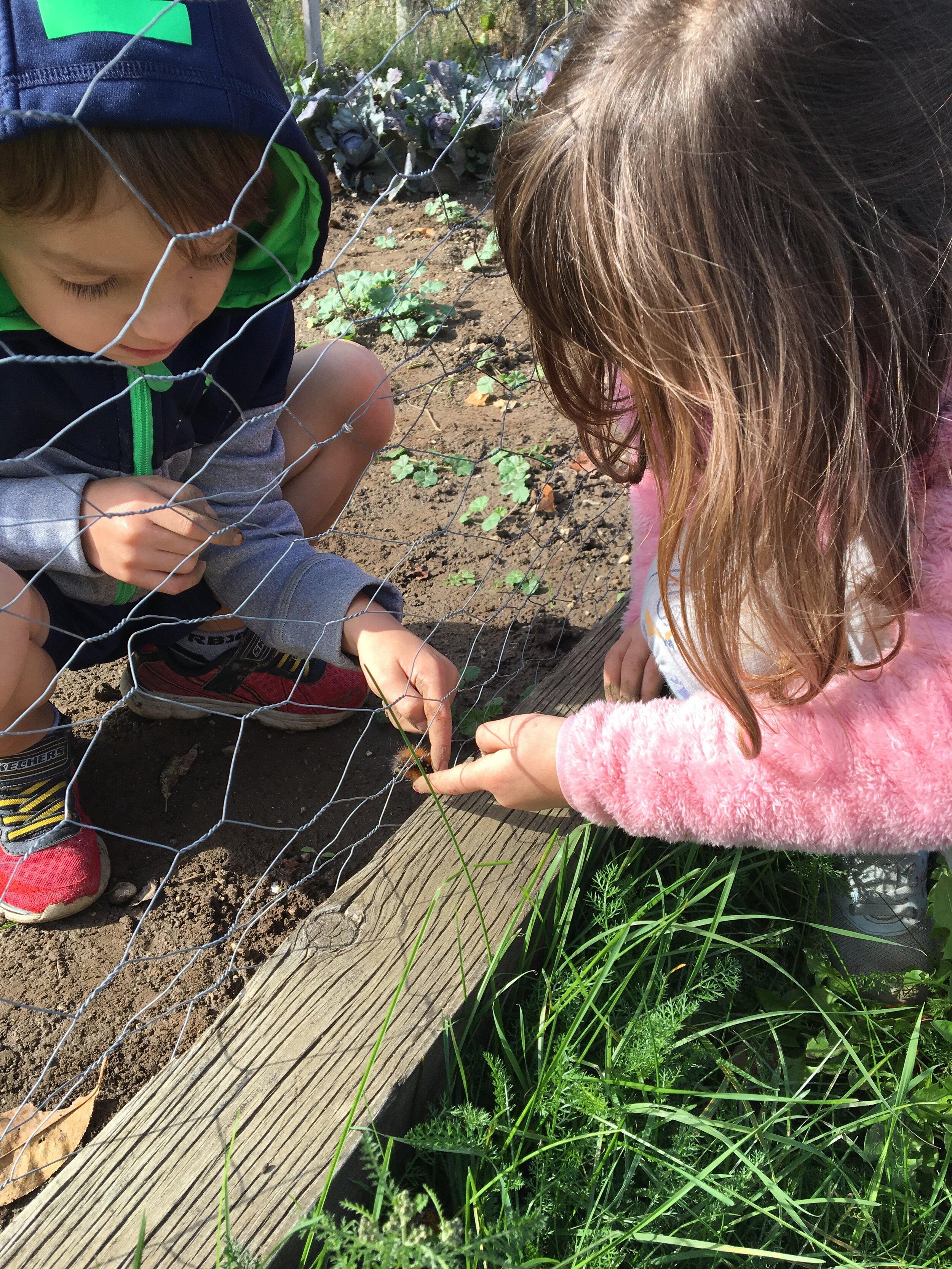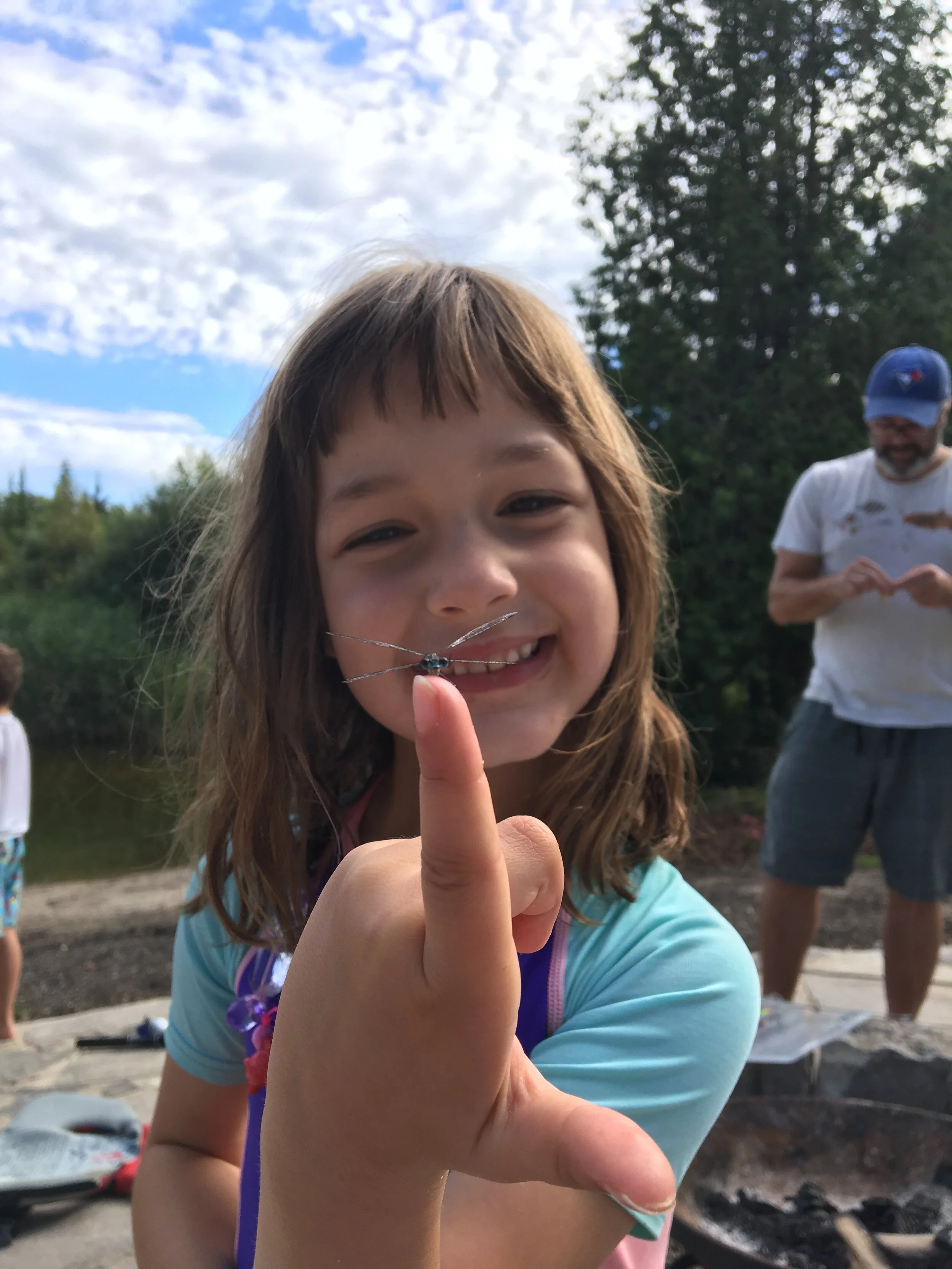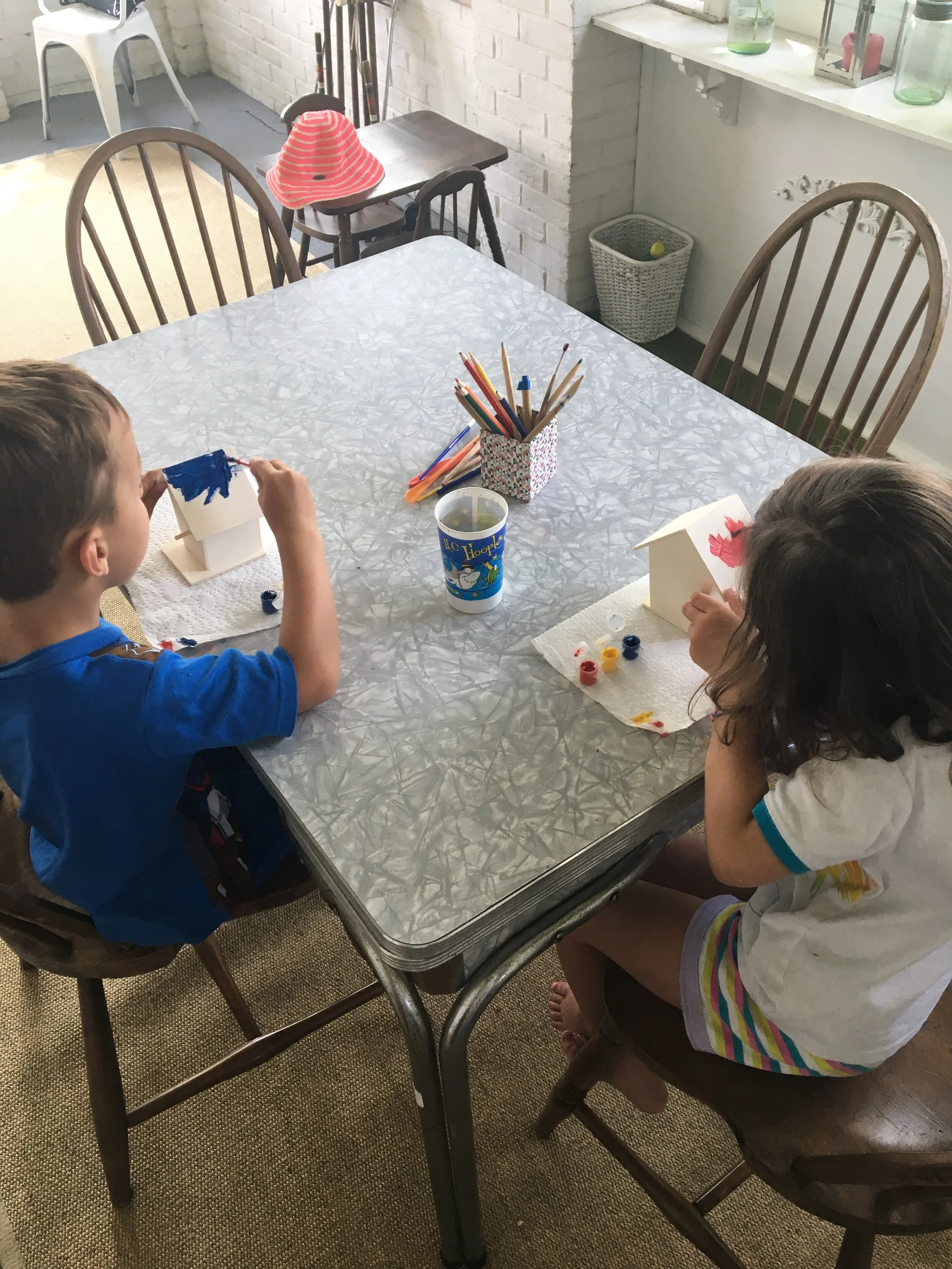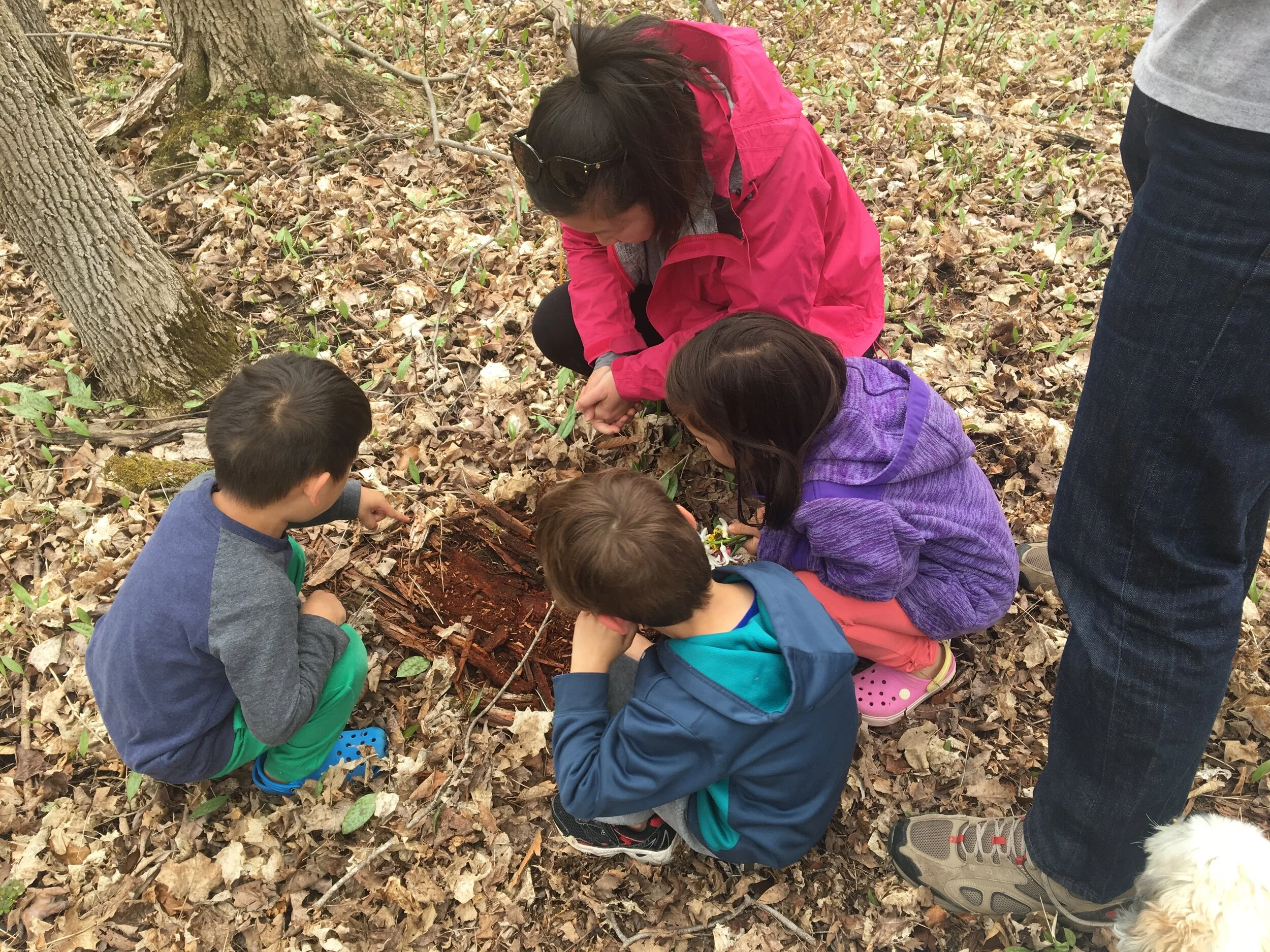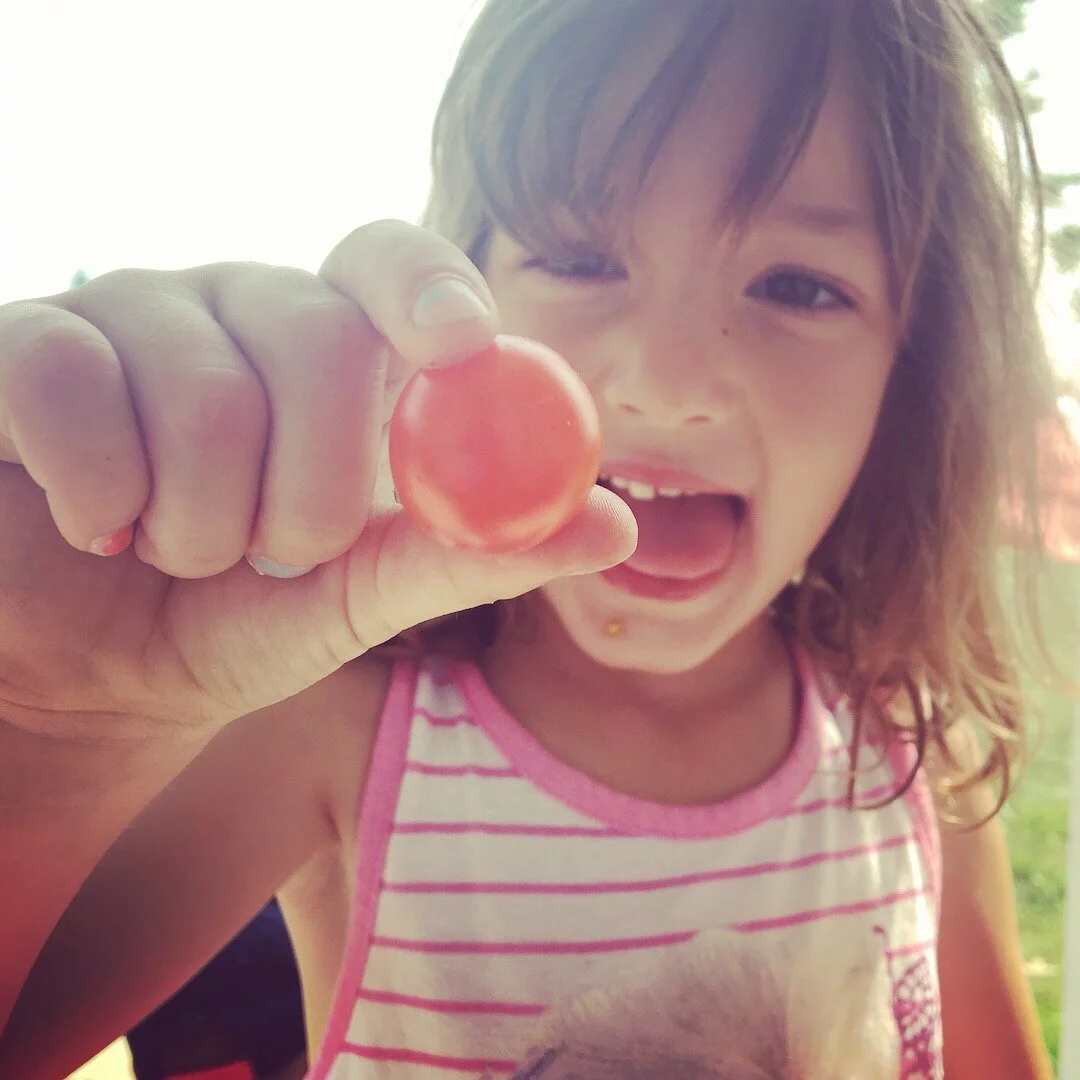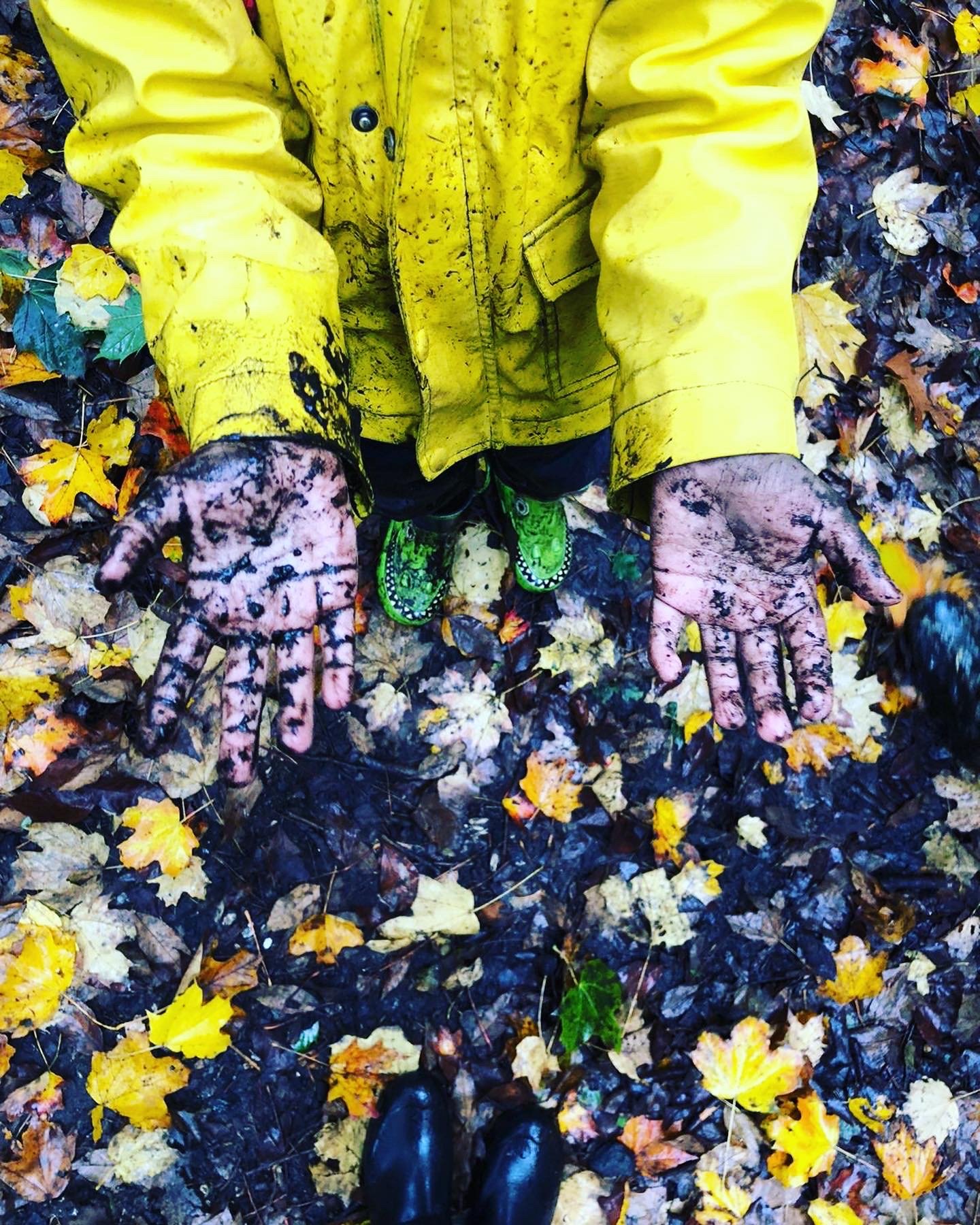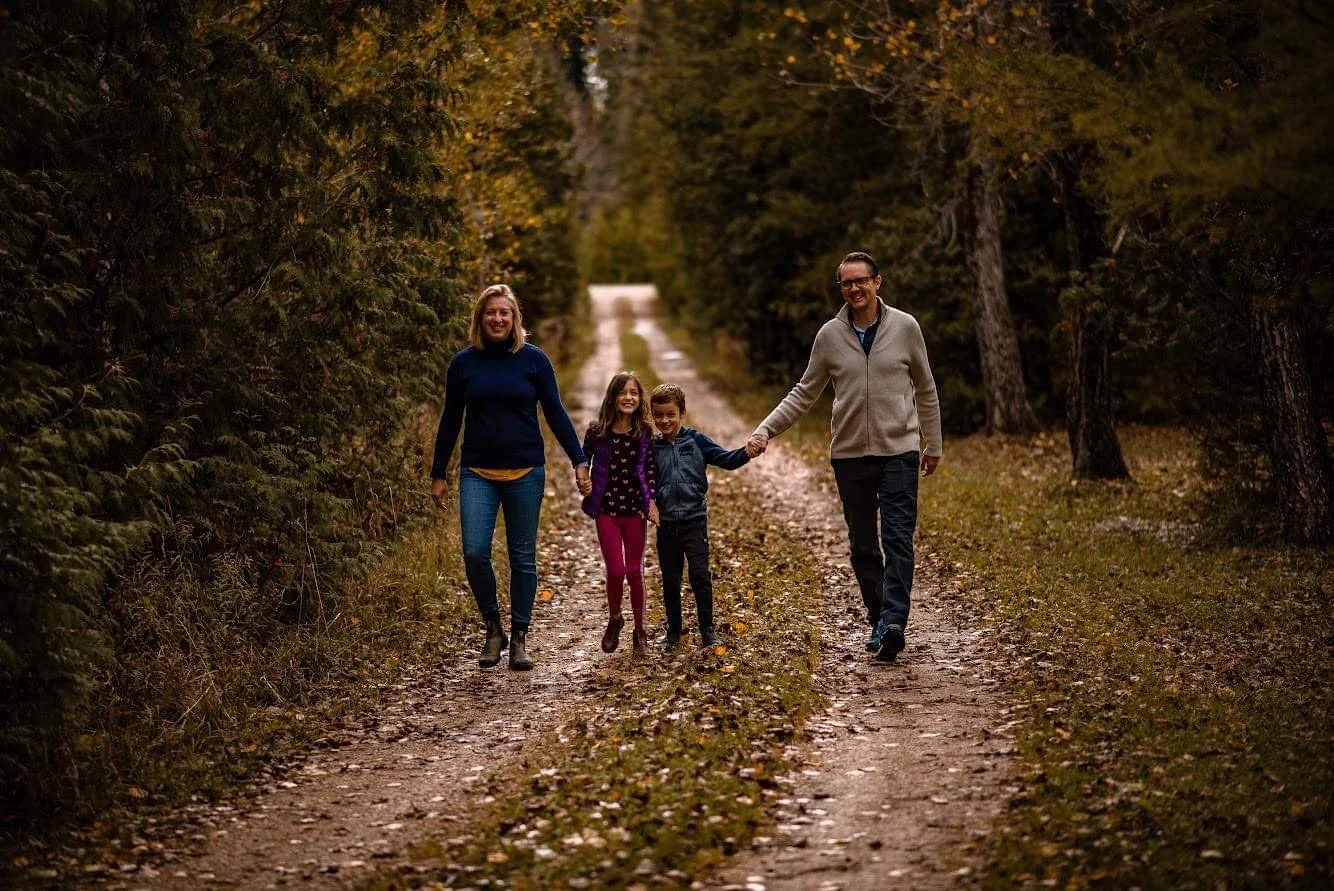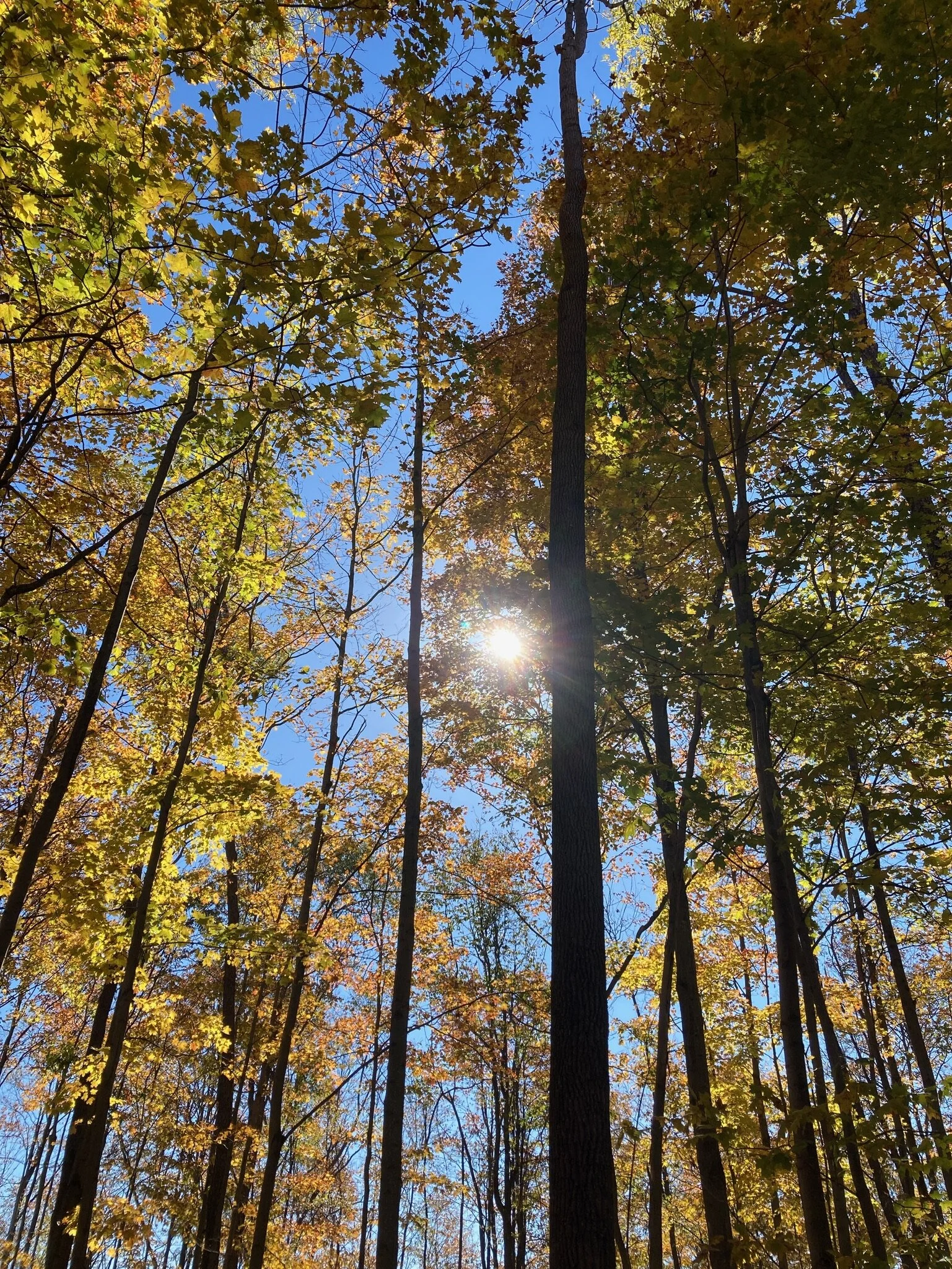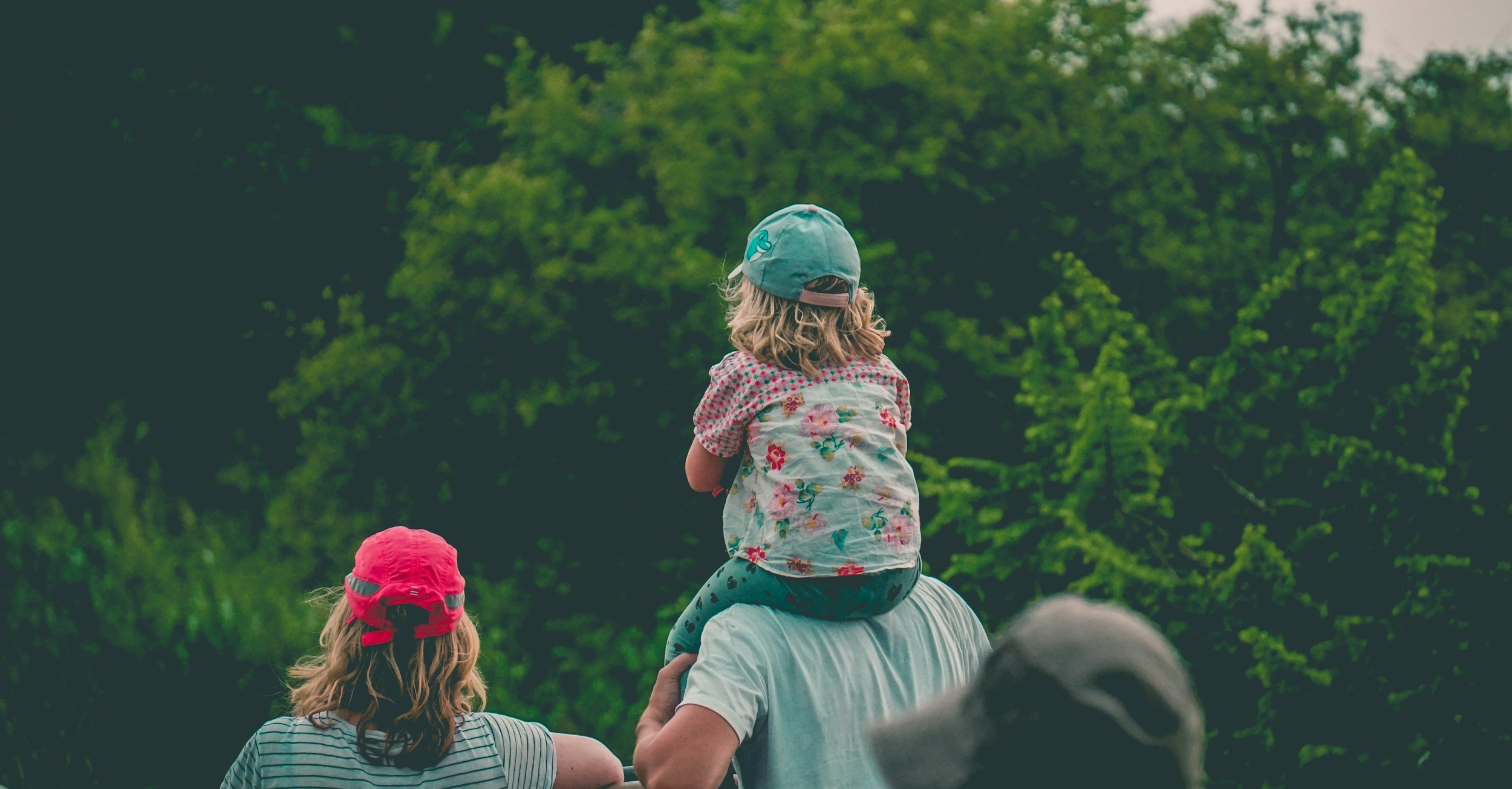
Larchwod Blog
Pervasive Drive for Autonomy and Autism
Young child holding a paper map, studying it intently.
Our team of OTs recently met for some professional development, exploring the autistic neurotype called Pervasive Drive for Autonomy (PDA). It was a fascinating conversation, led by OTs Emma & Kristina who are seeing this presentation in more and more of their clients and families.
PDA versus Demand Avoidance
PDA is used to describe a neurotype which co-occurs with autism spectrum disorder. It results in a pattern of behaviors in which real or perceived loss of autonomy leads to an extreme stress response. When we use “Pervasive Drive for Autonomy”, instead of language like “oppositional behaviors” or “pathological demand avoidance” we are acknowledging it as a nervous system disability rather than willful behavior.
Neurodiversity Affirming
At Larchwood Nature OT and Davis OT we use neurodiversity affirming treatments and language. We are not looking to change a person or make them compliant but rather we are seeking creative ways to accommodate their disability within all their environments.
What does PDA look like?
PDA has 3 distinct characteristics:
Equalizing
Fight/Flight/Freeze
Burnout
A child with PDA will try to gain back control in situations where there is a perceived loss of control. This can be with a parent, teacher, therapist, older sibling, etc. If there is a sense of lack of control this will lead to an extreme stress response of fight, flight or freeze. Over time these responses build and result in burnout that looks like intense fatigue and the inability to participate in even the most basic activity of daily living.
How can we work with PDA?
There are a number of ways that you can support the child or adult in your life that has PDA.
Lower demands on them: This may mean shifting your expectations on what it means to be a child, parent or therapist. Demands are what triggers the nervous system to go awry so being thoughtful about what that looks like at home or in the classroom.
Provide control: Allow for choice, child-led activities and make them feel safe.
Increase recovery time: Build downtime in as much as possible to conserve energy and allow the nervous system to rest.
Want to learn more?
You can book a Parent Coaching session with OT Emma and learn so much more, plus be able to implement some new strategies.
Head to the following websites:
Check out these books recommended by OT Kristina:
In an effort to be more neurodiversity affirming, a new autistic neurotype is becoming more widely recognized. Pervasive Drive for Autonomy is a nervous system disability triggered by a person’s real or perceived lack of autonomy. The reaction to this sensation is an extreme stress response and possible burnout. It’s important for therapists, parents and teachers to understand this cycle and make efforts to accommodate their child’s unique needs.
Do you think your child or family member may have PDA traits?
Want to talk it through with an OT and try some new strategies?
Book a Coaching Session with Emma.
Larchwood is Neurodiversity Affirming
Read on for a special reflection from one of our Larchwood parents. Sada describes how we can offer something different for our children, how we need to listen to understand our neurodiverse kids and how we as parents sometimes need to grieve what we thought parenting would be.
A Powerful Note from a Parent
Recently a Larchwood parent and volunteer, shared her thoughts on what sets us apart from others therapeutic group programs. She also strongly believes there is space for caregivers, educators and therapists to change the way they approach the neurodiverse kids surrounding them.
This parent has had a long journey in articulating these reflections. She is also a regulated health professional and an advocate for neurodiverse kids living in rural areas with limited access to healthcare resources. She truly inspires us each year at Larchwood Farm Nature OT Camp, sharing her parenting knowledge and experience in the kindest most applicable way so that we can continue to be the best for our campers. Sada has been with us since the first summer of camp and continues to be our biggest supporter and advocate.
Sada’s Story - The Power of Observation
“I was thinking of you and the camp yesterday and how I always ask that we ease up on expectations - that it isn't our right to set the expectations but to watch the kids and try to understand where they are at - setting the goals together and that informs our expectations.
The Challenges in the Public School System
C's (Sada’s youngest son) teacher grabbed me yesterday to tell me that he refused her directions - that he normally complys but yesterday he refused. I had to think about that a lot and talk to C to understand what was going on with him. My naive mom brain would think - “C, you need to apologize to your teacher and listen to her today!”
From C's view - he was overstimulated with the excitement of Valentine’s Day, a bit of extra sugar on board, also fighting a cold, up too late and at the moment of truth... he had the chance to be the "caboose" in the line. He loves having special jobs. He is very needy and quite insecure. His teacher tends to raise her voice when she is frustrated (again, who could blame her) but yelling is very triggering for C because of his trauma background.
Why is my child always saying “No”?
His refusal was his protection and that was really important to him at the time for his survival - by now his brain is offline (also underdeveloped in the prefrontal cortex from trauma during crucial development years +/- ADHD) and refusal is the most effective way to stay safe. This is very hard to explain to an educator:
"Mrs. K, you need to do better, catch the kids when they're up stream, be a detective, check in with your students. Don't raise your voice with a student, there will be more than one child who is triggered by yelling. And I promise you that C's refusal to comply wasn't the first sign that he was having an off day yesterday - so you could have predicted that he wouldn't be able to comply with strict instructions to give up his cherished caboose position.”
Maybe to Mrs. K, being the caboose is no big deal, but if she knows anything about C, she would know that he craves feeling special because of a deep wound that he carries on the inside.
At Larchwood we have the time to be more involved
I understand that in a public school with high ratios - it's almost impossible for the educator to be involved at this depth - but at camp we can be! This is how I'm trying to teach professionals to see the kids who are struggling, to understand them and meet their needs.
Shifting our Mindset
As a mom, I've had to let go of the idea of the mom that I would be. I've had to grieve that and let it go when I was ready. I think that the same thing happens professionally.
We invest in this idea of the services that we'll provide and the type of clinician that we'll be - then we get these kids on our service that don't (can't) do any of the programming that we organize even though we're sure that it's excellent programming (and we think they have the capacity). It's not about the programming, sure programming and opportunities are very important, but we'll never get to the programming if we can't meet the child emotionally where they are at. Some days will be different and we won't get our way - but that's for us to get over - it can't be a reflection of the child's success.
Does this sound like the approach you have been seeking for your own child(ren)?
Want to learn more about the services we offer?
Maybe you even want an opportunity to hear more from Sada!? Guest speaker!
Click here or book a discovery call with Emma to chat about your family’s needs.
3 Reasons Your Child Needs More Risky Play
Risky play is a hot news topic right now as yet another winter activity has come under scrutiny. Tobogganing has been banned in a number of City of Toronto parks. What are your thoughts?
What is Risky Play?
When kids experiment and push themselves in new environments, they are participating in ‘risky play’. Without knowing what will happen, they explore and figure out what will happen. They feel excited, thrilled and challenged!
Risky play has been a hot topic in the news recently as we discovered that tobogganing is banned in many City of Toronto parks. Did you also know that climbing trees is not permitted in City of Toronto parks?
Unstructured, outdoor play is key for childhood development, especially as we see growing numbers of obesity, anxiety and behavioral issues in our children.
1. Risky Play helps children discover their own abilities, limits and comfort levels!
We are encouraging children to get up and move! They are learning to assess their strength and building physical literacy. Their bodies will remember these repetitive movements and the joy that came with them - building a lifelong love of physical activity.
2. Risky Play builds immunity!
Did you know that digging in the earth, moving around barrels, logs and other loose parts is in fact good for your overall health!? It diversifies your skin and gut bacteria which is a good thing.
3. Risky Play builds self-confidence, resilience & thinking skills!
Rough and tumble play builds resilience, conflict management skills and better problem solving in kids. In a recent study, students in Grade 4 were provided with risky play opportunities for 3 months. The teachers then reported improved resilience, self-esteem and concentration in the classroom!
Parents Balance Risks & Hazards
Obviously, we are not going to allow our children to play near a busy roadway or along a rushing river. As parents we can use our developed cognitive skills to assess the risk and supervise the child based on their age and development.
At Larchwood Nature OT we believe in the value of unstructured, free play in nature. This is a key ingredient to all of our programs. We allow the children to lead, be curious and try new things. We have changed our language from “be careful” to:
“Take your time”
“I’m here if you need me”
“Do you feel stable/safe?”
“I like how focused you are!”
The 2022 Participaction Report Card gave Canadian children a grade of D overall for physical activity and a D– for active play. We need to do better! At Larchwood Nature OT we fully support risky play and families are seeing the positive changes in their children. We balance risky play with treatment in all of our outdoor sessions.
If your child has a sense of curiosity and enjoys the outdoors then check out some of our unique programs.
Supervised Risky Play Options at Larchwood Nature OT
Weekend Nature OT Group - 8 week Winter session begins March 2, 2024
Nature Play Group - Feb 17, 2024, drop by, stay for the hour, OT led, $19/child
Larchwood Farm Summer Camp - Therapeutic camp for kids 4-12 years of age!
The Dreaded "Gift Disappointment"
Holidays come with the highest highs and lowest lows. Gift disappointment can make us all feel upset and embarrassed. Here are some tips for dealing with the big emotions after a gift is opened and not appreciated.
The Dreaded “Gift Disappointment”
This info recently went out to all of our Nature Insiders on our email list. The feedback was overwhelming so I thought I’d also share it here on the blog! If you don’t want to miss out on our monthly email, click this link to go to the website and add your name & email.
My Story
My son, Alex, is quite into LEGO. This past year the more obscure and vintage the better. Not the easiest task for shopping. But last year I remember the significant gift disappointment on Christmas morning when he did not receive the very large and very expensive set he wanted. And to top it off we had no family buffer - we were snowed in for 4 whole days at the farm. JUST THE 4 OF US. It was tough and it really hurt my heart. Given his emotional maturity is still underdeveloped I sought out some advice from Dr. Nicole Beurkens, a child psychologist, and I’m sharing highlights from her podcast so we can all be prepared and ready for gift disappointment!
7 Tips for dealing with the big emotions that come with Gift Disappointment:
Please remind yourself that it does not mean your child is ungrateful or spoiled but rather it’s your child’s reaction to the feeling of disappointment.
Find a quiet, safe, regulated time to begin talking about these feelings BEFORE the big day.
Explore: Get kids thinking and talking - being prepared takes the power out of a big feeling. “What do you think it will feel like if you don’t get that Lego set you are asking for? … I was wondering how you might feel if one of your cousins gets a gift that you wanted?”
Priming: depending on the age of your child you may need to help them answer the question, name feelings, understand that 2 feelings can happen at the same time, etc. “You really love Grandma but last year she gave you that thing you didn’t really like … and it’s so hard because you love her a lot … but you were so disappointed”.
Move into Problem-Solving. Use role playing where you get to be the kid and they are the grandparent/aunt/friend. Note: Impulsive kids need A LOT of practice so take your time.
Together make a list of 3 ways you could respond/react. Which are the 2 best ones??
In the moment of the big day, it’s about how you, the parent, manage your emotions! Stay calm. Give a hug. Say “I know this is hard but it will be okay”. Validate their feelings.
You’re not alone!
These things happen - it is normal. Young kids are still learning how to manage big feelings like disappointment. Move on, everyone will be okay. With more practice it will get better.
Anything that you can do to lessen the unavoidable stress and chaos of the holidays is a priority at Davis OT. In fact, it is the hot topic for our December Campfire Chat so if you want even more tips and discussion join us on December 14th at 7pm virtually with OT Kristina.
Season's Greetings from Alanna
Hi everyone,
I haven’t written a blog post for quite some time! So what better time than in December, my favourite month! I’m a Sagittarius through to the bone - lover of winter, ultimate dreamer, traveler, loyal friend, creative and caring. I was born a week before Christas and have never wanted to change my birthday in any way!
What you may not know about me is that this Entrepreneur ride has been a steep learning curve. I love, love, love program development and tapping into my creativity. What I do not love is the finance side of things, so alas that is my knowledge gap and where I continue to push myself.
This company is growing and becoming more than what I ever dreamed. I have met such an incredible group of Nature OTs, all over the world, and continue to meet new, aspiring Nature OTs. It’s amazing how often I open my email to find a new message from someone that has found us and wants to know more - in fact may have their own dreams of becoming an OT Entrepreneur. I love to spend the time fostering these connections and supporting likeminded people!
So, I thank you - all of you! From my amazing team of Nature OTs, my keen volunteers, my awesome MScOT students, my nature-loving families who entrust us with their children to work on tough things like emotions and to my wonderful, supportive friends and family.
Happy Holidays to each and everyone of you. Here’s to 2022 and all that it has to offer. Many new things will be coming through Larchwood Nature OT and in fact we’re embarking on some fun programs to cap off 2021.
Keep joining us in this adventure - I promise, from the bottom of my Sagittarius heart, that it will continue to be progressive, creative, fun and wild just like me!
Larchwood Handwriting Camp Recap
We just wrapped up our mini Handwriting in Nature Group here at Larchwood, and it was an exciting, mutlisensory-filled experience for the kiddos! To recap, some goals of the camp were:
Review how to write letters correctly
Build confidence with letter formation
Build fine motor, gross motor and motor planning skills needed for handwriting
Many of the campers struggled with inconsistent spacing between letters, letter reversals, pressing down too hard, and difficulty making letters the right size. With this in mind, we planned various nature and multisensory activities to target these difficulties. While we only had a week, it was awesome to see improvements as we worked through these challenges together with the campers!
Some highlights from the week included:
Skywriting our names and birthday month
Telling a story with our yoga poses
Doing a letter scavenger hunt on our big hike
Writing in our journals to the daily prompts
Playing with clay and shaving cream to target those fine motor skills
Aside from these activities, we used the “Learning Without Tears (LWT)” handwriting curriculum, which takes on a multi-sensory and developmental approach to promote proper letter formation. According to the Handwriting Without Tears (2018) research review, they have a unique teaching order that starts with letters that have a vertical stroke. By grouping letters according to formation and complexity, a developmental approach is used, allowing children to learn in a scaffold sequence (LWT, 2018). Since easier letters are taught before letters with more complicated strokes, it provides an opportunity for students to build upon previous knowledge (LWT, 2018).
Now that handwriting camp at Larchwood is wrapped up, we will be sharing our resources and experiences with OTs running similar handwriting groups in the city. Stay tuned for more updates on the blog and Instagram!
Be a Nature Mentor to the Children in your Life!
Over the past weeks, I have researched and learned about the history of the connection between children and nature. The general consensus is despite the benefits of nature for children, over time children are losing their connection to nature because of being overscheduled, strict school curriculums that allow less time for unstructured play outdoors, the rise of technology, and a heightened concern for safety while playing outdoors. One of the most helpful tips I have come across to encourage a connection to nature for the children in your life is to become a nature mentor, from the book, How to Raise a Wild Child, by Scott Sampson.
To start you have to develop your own connection and passion for nature because children learn from the behaviours that adults in their life model. One easy way to do this is to discover a nature activity you enjoy such as hiking, bird watching, kayaking, or paddle boarding. It can be anything you are interested in or always wanted to try out. Then encourage the child in your life to come with you! Another great way to get started is to go on a nature adventure with the children in your life in which you explore different nature activities until they find one that they really are passionate about. By having the children in your life be the leader in this adventure you are not only encouraging them to get out in nature, but also to develop their independence and leadership skills!
Some of my favourite nature activities/adventures I have learned about:
Go out on a Wander: Go and explore nature with no set plan or purpose. This is a great activity to practice mindfulness in our over-scheduled world.
Nature Sculptures: Go out in nature and find different natural materials (leaves, shells, pebbles, sticks, etc.) to create a sculpture. What is your sculpture’s name? Can you create a story around your sculpture?
Moon Walk: Go outside at night and look up at the sky. Can you see the moon? What colour is it? What shape is it?
Nighttime Walk: Find a safe place to go on a nighttime walk with your children. At night being outside can be quite the adventure to spot some nocturnal animals!
Nature Story Time: Create your own stories using nature as your inspiration. This is a great way to allow the children in your life to be creative and explore their imagination. As Albert Einstein said, “If you want your children to be intelligent, read them fairy tales. If you want them to be more intelligent, read them more fairy tales.”
I hope these nature activities/adventures give you the inspiration to explore nature with the children in your life!
Our Connection to Nature!
Over the past week, I have been discovering the benefits of nature-based play for children. One of the most impactful insights I have learned about the benefits of nature is the scientific evidence about how humans are inherently connected to nature. Through reading, Mindfulness & Nature-Based Therapeutic Techniques for Children by Cheryl Fisher, I have learned about nature and the brain-body connection. One interesting fact about the brain-body connection and nature is that as we walk through a forest, swim in an ocean, and roll down the grass we are inhaling and absorbing biochemicals released by trees, water, plants, and soil. These biochemicals trigger our body to release neurotransmitters such as serotonin and endorphins, which are linked to producing feelings of happiness and well-being. As I reflect on my personal experiences with nature, I am provided with examples of how going for a run in the valley near my home and swimming in the lake at the cottage creates a sense of happiness for me.
Learning about the brain and body connection and its relationship with nature, I was inspired to create a weekly nature craft content for the Larchwood Nature OT Instagram. I wanted to create social media posts that would encourage children and their parents to get out and explore how nature can be used as an inspiration to create unique and fun art and projects. These crafts will also help to develop fine and gross motor skills, sensory processing, visual scanning, planning and organization skills, creativity, and more! As I have been working on this, I have been challenging my creativity by going on adventures walking through nature to spark new ideas. I wanted to ensure that these crafts are engaging and fun because as a future occupational therapist I want to enable people to participate in occupations that are meaningful to them. I hope that these crafts provide an outlet to connect to nature and can be adapted and personalized to make these activities more meaningful to engage in! Check out the Larchwood Nature OT Instagram page each week for the weekly craft content!
My New Path to Continue to Explore Nature!
My name is Rozelen and I am a second year occupational therapy student at Western University. I am excited to begin my 3B fieldwork placement and be part of this valuable opportunity to contribute to the development of Larchwood Farm Nature Camp with Alanna, Katie, and the team.
Exploring the spring blossoms at Woodbine Beach in Toronto!
I am from Toronto and I have lived in the city my entire life, although I love the city, I feel most at home when I am surrounded by a forest or a body of water. In my childhood, I spent countless weekends with my family taking day trips to explore the beautiful scenery and nature of Ontario. We would hike through forests and swim in various lakes. As I have grown older, I have continued this tradition to include traveling to different countries to discover more forests, caves, oceans, and lakes. When I think back on these memories, I remember how happy I am when I am in nature and the sense of calm it creates.
When I learned about this placement, I was excited to apply for it because I knew it was a chance to combine my passion for exploring nature and my knowledge I have gained from the past two years as an occupational therapy student. As I read through the previous blog posts by Regan and Katie, I learned about the benefits of nature-based programming for kids, and I was excited to be a part of the team and to contribute to developing Larchwood Farm. I am eager to further explore how being immersed in nature through occupational therapy programs can lead to therapeutic benefits for children! I aim to take this knowledge into my future practice and to continue to advocate about the importance of nature-based occupational therapy services!
Launching July 2020: Larchwood Farm Children’s Nature Camp
Larchwood Farm
So it all began because I wanted to buy a farm! Growing up in Norfolk county with acres of tobacco as my playground, I’ve always been drawn to wide open spaces. My husband, growing up in Newfoundland, luckily also felt the same way.
In August 2016, after searching for several years, we ascended the curvy driveway of Larchwood Farm and knew instantly that this was the one. It had everything that we wanted and so much more.
Larchwood Farm is aptly named after the beautiful Larchwood trees, also known locally as Tamarack or Juniper, which are found throughout the property. The Larchwood is particularly unique in that it is a deciduous conifer. Its short, needle-like, blue-green leaves turn bright yellow and then drop in the Fall. The Victorian Farmhouse was built between 1900-1905 and there is also a newer drive shed (that I like to call “the barn”) and an old outhouse (no longer in service!).
Larchwood Farm is 101 acres of boreal forest, hardwood forest, wetlands and fields. 50 acres of hay is grown and harvested annually by a neighbouring farmer as a source of food for his cattle. Apple trees are speckled throughout the property and we grow quite an extensive vegetable and flower garden each year. The farm is a medley of rolling hills and lovely maintained trails and paths. We continue to nurture and develop the trail system as we explore our property.
We are also lucky enough to have fresh water on the property. Traverston Creek runs through the property and is home to plenty of Brook Trout. There is also a spring fed pond which is home to Chubb fish, Bass and Trout. A few friendly water snakes, frogs, and muskrat have also been spotted in our pond. It’s a great place to cool off in the summer, explore the shoreline and get close with the fish. They are known to nibble toes and are surprisingly easy to catch, and of course later release. We treat all our farm creatures with respect.
My goal has always been to share Larchwood Farm especially for those that may not have the opportunity to experience such a natural environment. The next step is to merge my love of Occupational Therapy with the love of the farm. Development of our unique therapeutic nature camp will begin in April 2020 in collaboration with the University of Toronto and University of Western Ontario, Faculties of Occupational Therapy and Occupational Science.
Nestled in Grey County on 101 acres, Larchwood Farm Children’s Camp will connect kids to nature with a therapeutic sense, guided by Occupational Therapy frameworks and theories. Our camp team will include Occupational Therapy Students, Registered Occupational Therapists and Summer Student support staff.
Camp Goals
01 : Improve fine motor, gross motor, coordination and balance skills while exploring nature.
02 : Develop cognitive functions including problem solving, planning and organization.
03 : Regulate senses and emotions through participation in group activity and play.
04 : Larchwood Farm Nature Camp will run in weekly blocks. Each session will be 5 days long.
